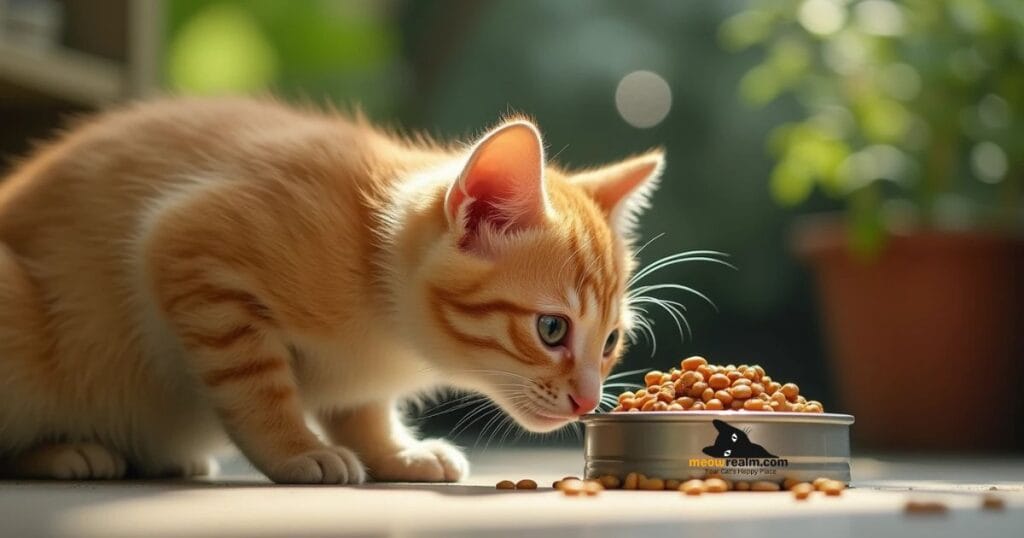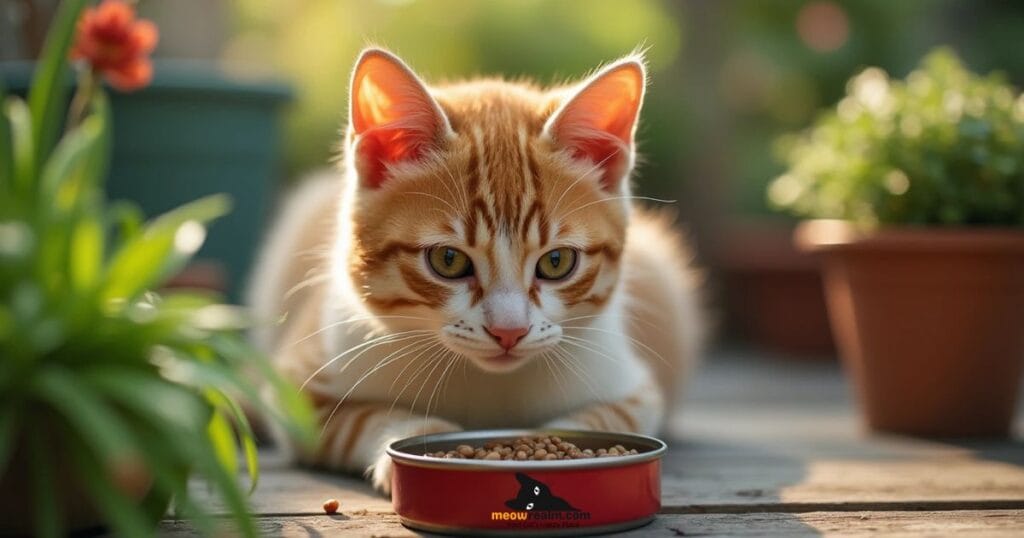When it comes to caring for your cat, few things are as essential as providing high-quality food. Nutrition affects every aspect of your pet’s life, from energy levels to coat shine, to overall health. Many pet parents find themselves choosing between different types of food, weighing options like dry kibble against canned, wet varieties. In this guide, we’ll explore all the critical aspects of cat canned food to help you make the most informed decisions.
This comprehensive guide covers why canned food may be a great choice, types of canned food, how to choose the best option, feeding guidelines, and more. So, let’s dive in and see if cat canned food might be the right fit for your feline friend.
Table of Contents
Why Choose Cat Canned Food?

1. Moisture Content for Better Hydration
Cats naturally don’t drink as much water as some other pets, and in the wild, their diet would consist largely of prey, which contains high levels of moisture. Because of this, canned food provides much-needed hydration, which can help keep your cat’s urinary tract and kidneys healthy. If your cat tends to avoid the water bowl, canned food could be an effective solution for keeping them well-hydrated.
2. Nutrient Density Aligned with a Cat’s Natural Diet
Canned food is often rich in animal-based proteins, essential amino acids, and fewer fillers. Unlike some dry foods that are high in carbohydrates, most canned foods focus on the high-protein, low-carb composition that cats need as obligate carnivores. This focus on animal proteins means it’s more aligned with a cat’s natural dietary needs, helping promote lean muscle mass and overall health.
3. Palatability and Digestibility
Canned food has a rich aroma and texture that cats typically love, making it ideal for picky eaters. Many pet owners find that even senior cats or cats with dental issues enjoy the softer texture, which is easier to chew and digest.
Cat Canned Food vs. Dry Food: Pros and Cons
Here’s a quick breakdown of the main pros and cons of each food type:
| Canned Food | Dry Food |
|---|---|
| High in moisture (great for hydration) | Longer shelf life, convenient for storage |
| Often higher in protein | Generally less expensive |
| Limited fillers, more natural ingredients | Can help with dental health through crunch |
| Preferred by many cats for taste | Convenient to leave out without spoiling |

While both canned and dry foods have their place, canned food provides specific health advantages that can be essential for many cats, particularly those prone to urinary issues, dehydration, or obesity.
Types of Cat Canned Food
Not all canned foods are created equal. There are various formulations and textures to choose from, each with unique benefits. Here’s a look at the main types:
1. Pate
Pate-style canned food has a smooth texture, making it easy for cats of all ages to eat. This texture is often preferred by cats who have dental issues or are older, as it’s easier to chew.
2. Chunks in Gravy or Sauce
Cats that like a bit of variety in texture may enjoy chunks in gravy. The flavorful gravy can be especially appealing to cats who need extra encouragement to eat, while the chunks offer a satisfying chew.
3. Minced or Shredded
Minced or shredded canned food provides a texture that mimics fresh meat, which appeals to many cats who are natural chewers. This option is often a hit for cats with a stronger preference for more “solid” foods.
Key Ingredients to Look For
When selecting canned food, focus on options rich in:
- Animal proteins: Like chicken, turkey, or fish.
- Essential nutrients: Such as taurine, which is vital for heart health.
- Omega-3 fatty acids: For a shiny coat and healthy skin.
- Low fillers: Avoid foods high in grains and starches, as these are not ideal for a carnivorous diet.
How to Choose the Best Canned Food for Your Cat
The best canned food will align with your cat’s specific needs based on their age, health, and preferences.
Consider Your Cat’s Age and Health Needs
- Kittens: Look for high-protein, high-fat formulations to support growth and development. Foods labeled “for kittens” or “for all life stages” generally meet these needs.
- Adults: Adult cats thrive on balanced protein and fat, focusing on lean meats and fewer carbohydrates.
- Senior Cats: Look for food that’s easy to digest, with moderate fat content and nutrients to support joint health.
Deciphering Food Labels
Knowing how to read food labels can help you select quality products:
- First Ingredients: Make sure meat is one of the first ingredients listed, as this signals a higher quality of protein.
- Guaranteed Analysis: Check protein, fat, and fiber percentages to ensure the food meets your cat’s dietary needs.
- AAFCO Approval: This label indicates the food meets basic standards for nutrition set by the Association of American Feed Control Officials.
Best Brands for Quality Cat Canned Food
High-quality brands focus on natural ingredients and nutritional balance. Here are some well-regarded brands in the canned food market:
- Hill’s Science Diet
- Blue Buffalo
- Wellness CORE
- Natural Balance
Choose brands with transparent sourcing and ingredient lists, and consult your vet if you need guidance on specific product lines.
Feeding Guidelines for Cat Canned Food
Feeding your cat canned food may require some adjustment from dry feeding. Here are general guidelines:
1. Portion Sizes
Most canned foods provide guidelines on the label, but typically:
- Kittens need about 1-3 cans daily (depending on can size).
- Adults require 1-2 cans per day, based on activity level and size.
- Senior Cats may require less, depending on their activity level and health.
2. Creating a Feeding Schedule
Dividing meals into two or three servings can prevent overeating and help with digestion. Most cats benefit from regular mealtimes, rather than free-feeding.
3. Transitioning to Canned Food
If your cat is accustomed to dry food, a slow transition is recommended:
- Start by mixing a small amount of canned food with their current food.
- Gradually increase the canned food ratio over a week.
Pros and Cons of Cat Canned Food

Pros
- Hydration: Provides essential moisture.
- High in animal protein: Matches natural carnivorous diets.
- Easy to digest: Suitable for sensitive stomachs or dental issues.
Cons
- Cost: Typically more expensive than dry food.
- Shorter shelf life: Needs refrigeration after opening.
- Storage: Requires a cool, dry place for unopened cans.
FAQs About Cat Canned Food
Is canned food better than dry food for cats?
Yes, for many cats, canned food is a better option due to its high moisture content and high-quality proteins.
How long does cat canned food last once opened?
Once opened, canned cat food should be covered, refrigerated, and consumed within 3 days.
Can kittens eat adult canned cat food?
Kittens should eat food formulated for their developmental stage until they reach adulthood, typically around one year.
How can I tell if my cat has food allergies?
Common signs include skin irritations, vomiting, or diarrhea. A visit to your vet can help diagnose and treat any potential food allergies.
Conclusion
Choosing the right cat canned food can be a pivotal decision for your cat’s health. With its high moisture, protein content, and rich flavors, canned food offers multiple benefits that align with your cat’s natural dietary needs. Whether you’re transitioning to canned food or seeking the highest quality for your picky eater, understanding the options and tailoring them to your cat’s needs ensures they receive the best nutrition.
For more information and tips, check out MeowRealm. Share this guide with other pet parents and help spread the word about the benefits of quality canned cat food!

